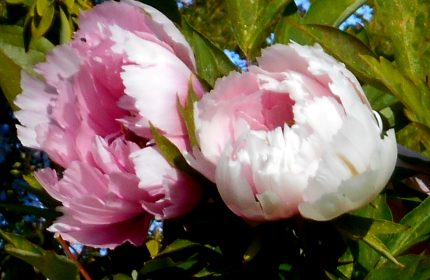How to boost your veg patch through crop rotation
For National Allotments Week (August 10-16), we look at veg you can grow together, and the benefits of crop rotation.
Do you know your brassicas from your legumes, or which veg can be grown side by side?
National Allotments Week (August 10-16, nsalg.org.uk) is the ideal time for beginner gardeners to get to grips with plant families and crop rotation, for the best chance of success with veg grown as annuals – the ones you will sow and harvest within one year.
There are four major groups of vegetables…
1. Brassicas: members of the cabbage family including cabbage, Brussels sprouts, broccoli, cauliflower, kale, kohlrabi, oriental greens, radish, swede and turnip.

Cabbages are brassicas
2. Legumes: members of the pea family including peas, broad beans (although French and runner beans can be grown wherever convenient) and clover, which is used as green manure. Legumes can fix nitrogen from the air in root nodules and if left to decompose in the soil, will be beneficial to later crops.
3. Potato family: potatoes and tomatoes (peppers and aubergines can be grown anywhere in the rotation).
4. Roots: beetroot, carrot, celery, celeriac, parsley, parsnip, Florence fennel and all other root crops except swedes and turnips.
How crop rotation works…

Crop rotation reduces the risk of root diseases
Traditionally, you create four beds within your allotment space, one for each of these groups of vegetables, and rotate the groups between beds each year, moving them in the same order and direction, so you avoid planting the same crop in the same place more than one year in four, to help prevent root diseases.
This also helps make the most of their soil requirements, as brassicas and roots benefit from the soil being given a top-dressing of lime, while potatoes and legumes prefer soil that has been manured. Alternate treatments help keep the soil balanced, while soil structure benefits from having a deep-rooted crop one year and a shallow-rooted one another.
What about modern crops?
The old system doesn’t take into account modern crops such as sweetcorn and courgettes, but many people don’t want to devote a quarter of their plot to maincrop potatoes. If that’s the case, just divide the plot into three and grow courgettes with peas and beans.
Salads and other quick crops can be grown in the gaps between the rows of slower-growing, bigger crops. Onions, pumpkins, salad leaves and stem and fruiting vegetables can slot in where there is space, although onions are often grown with legumes.
And if you forget…

Don’t stress if you can’t remember everything
So, in all the excitement of your new allotment, you may forget what you grew on a piece of ground the previous year. Don’t worry, just remember these important points:
Don’t grow potatoes in the same spot two years running, because they are hungry feeders and will leave the soil depleted of nutrients.

Don’t grow potatoes in the same place two years running
Add lime to the soil in autumn after growing potatoes, and grow peas or beans on that piece of ground. Peas and beans are great nitrogen-fixers, producing plenty of nutrients for any crop that follows them, including brassicas.
With root crops, don’t dig in manure before planting as they won’t like it. Instead, apply manure once you have harvested the root crops in autumn, so the soil will be replenished in anticipation of potato planting.
What about perennial veg?

Rhubarb will need its own permanent spot
The Press Association
Latest posts by The Press Association (see all)
- Princess Charlotte ‘s ninth birthday marked by picture release - May 2, 2024
- Strong passwords more important than ever, experts warn - May 2, 2024
- Princess Charlotte set to celebrate ninth birthday - May 1, 2024
- How edible flowers can make your dishes look and taste divine - April 30, 2024
- Beauty entrepreneur Liz Earle on turning 60: Ageing is a gift - April 30, 2024




















